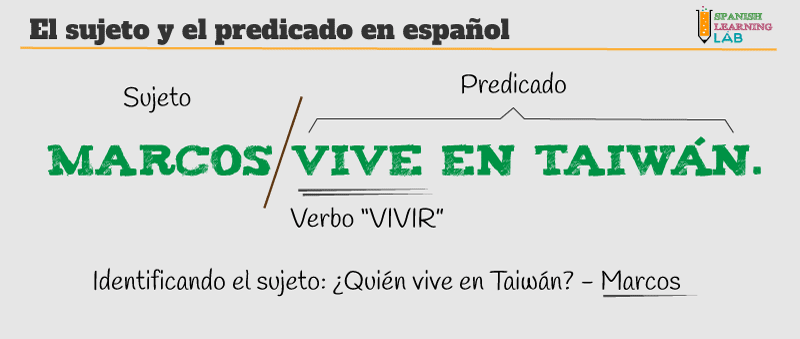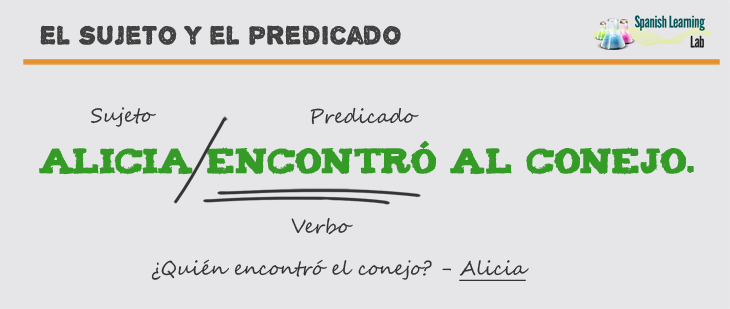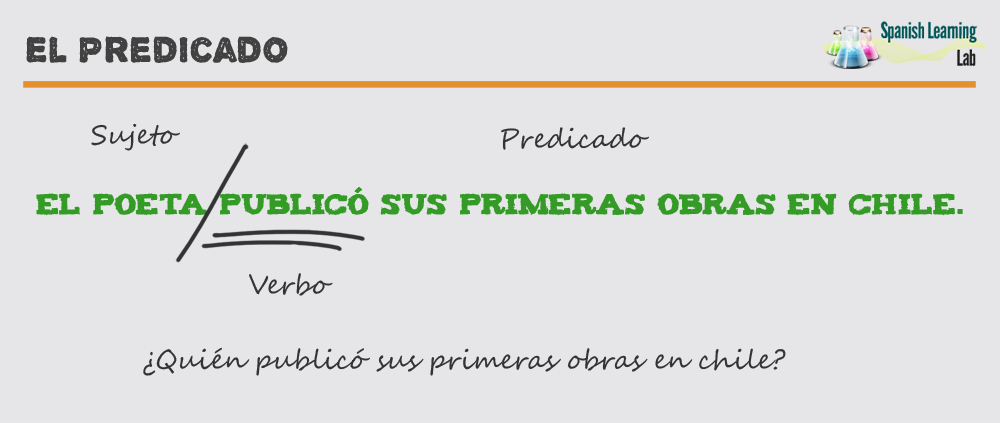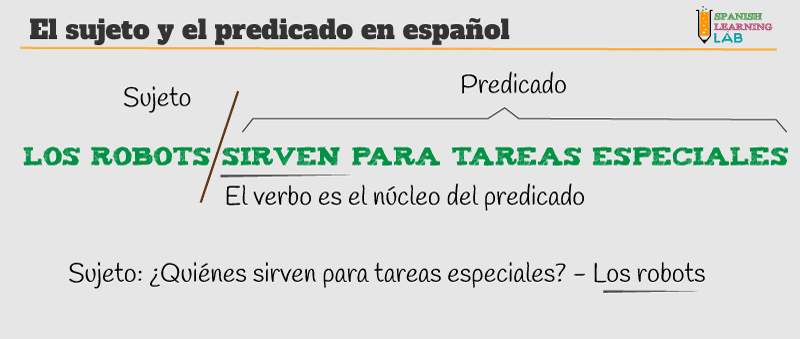¡Hola! Welcome to a new grammar lesson. This time, we will analyze the structure of simple sentences in Spanish and the parts that compose them. This topic is very important because it will allow you to identify the essential components of sentences, so that you can create meaningful sentences and know the grammar behind what you are saying at the same time. We will focus specifically on how to identify the subject and predicate of sentences with simple explanations, examples and exercises. Let’s start…
Introductory Video: Subject and predicate in Spanish
To begin the lesson, here is a video showing the rules related to the structure of sentences in Spanish. The video is basically a complete lesson about the subject and predicate in Spanish, explained in a simple way and it includes several comprehensible examples. Most of the content will be addressed later in the course of the lesson. Please activate the subtitles if you need them.
What do we call “Oraciones” in Spanish?
The Royal Spanish Academy defines sentences, “las oraciones”, as::
A syntactic structure formed by a subject and a predicate
In other definitions, a sentence is referred to as “The smallest unit of speech with complete meaning“. In simple terms, a sentence is the description of an action that someone or something performs. These are two examples of simple sentences in Spanish, only including a subject, verb and complement:
|
Carlos aprende español.
Carlos learns Spanish
|
|
El barco es inmenso.
The ship is huge
|
How to form sentences in Spanish
All sentences in Spanish have two specific parts: EL SUJETO (the subject) and EL PREDICADO (the predicate). Next, we will analyze in detail both parts of the sentence in Spanish
El sujeto – the subject
“El sujeto” or the subject in Spanish is the person, animal or thing that performs the action expressed by the verb. To understand this more clearly, let’s analyze two examples of simple sentences:
- Marcos vive en Taiwán. (Marcos lives in Taiwan)

First, we must identify the main verb or action in the sentence. In this sentence, the main verb is VIVIR (to live). By itself, the verb VIVIR cannot be considered a sentence, but when we conjugate it and say “Vive en Taiwán”, then we can say it is a sentence. To identify the subject, always ask yourself ¿QUÉ?, ¿QUIÉN? or ¿QUIÉNES? perform the action in the sentence. Taking this into account, for this specific sentence we could ask: “¿Quién vive en Taiwán?” (Who lives in Taiwan?) – “MARCOS”. By making this question, we can tell MARCOS is the subject of the sentence.
As for the second sentence, we should simply ask: “¿Quién encontró el conejo?” (Who found the rabbit?) to find the subject. The answer will be “Alicia”, and that would be the subject of the second example.
- Alicia encontró al conejo. (Alicia found the rabbit)

El Predicado – The predicate
Now that we have explained a little about the subject, let’s talk about the second part of the sentence: the predicate (el predicado). This word or set of words preaches something about the subject. Its core is always a verb that agrees with the subject. To put it more simply, the predicate is everything in the sentence including the verb and its respective complements, except for the subject. Let’s analyze a couple of sentences:
- El poeta publicó sus primeras obras en Chile. (The poet published his first books in Chile)
In this sentence, “¿Quién publicó sus primeras obras en Chile? – El poeta” (Who published his first books in Chile? – The poet) Taking into account that “El poeta” is the subject, the rest of the sentence would constitute the predicate, that is to say “Publicó sus primeras obras en Chile“. The main verb in this sentence would be “PUBLICAR”.

Let’s take a look at a second example about the predicate:
- Los robots sirven para tareas especiales. (Robots are used for specialized tasks)

In the second sentence, “¿Qué es lo que sirve para tareas especializadas? – Los robots” (what is it for specialized tasks? – Robots). As you can infer, “Los robots” is the subject and the rest is the predicate.
Some important considerations about the subject and predicate
It is possible to omit the subject for most Spanish sentences, as long as you conjugate the verb properly. In this case, the sentences would have something we call “sujeto tácito”, that is, a subject that is not written or mentioned explicitly, something you could infer from the context of the conversation or even the form of the main verb in the sentence. Here are a couple of examples:
|
Llueve todos los días (where the subject could be a place)
It rains every day
|
|
Compré algunos regalos (where the subject is the pronoun YO)
I bought some gifts
|
The core of the subject, or its most important part, is usually a noun or a personal pronoun, for example:
|
Ellos son mis amigos. (where ELLOS is the core of the subject)
They are my friends
|
|
Los niños juegan ajedrez. (where NIÑOS is the core of the subject)
The kids play chess
|
The verb is the core of the predicate, and essentially the most important part in a sentence. Let’s take a look at these two examples:
|
¿Tú viste las noticias? (where you VISTE, from the verb VER, is the core of the predicate)
Did you watch the news?
|
|
¡Apresúrate por favor! (where “APRESURARSE” is the verb and the core of the predicate)
Hurry up please!
|
The verb is usually accompanied by complements. These complements are useful to communicate the message in the sentence more clearly and efficiently. There are many types of complements, which we will study in detail in future lessons. Take a look at these two examples for now
|
El niño come una manzana (where “una manzana” is a direct object complement)
The kid eats apples
|
|
La abuela le da un juguete al niño. (where “al niño” is an indirect object complement)
Grandma gave the child a toy.
|
Practicing Spanish Grammar
In this interactive quiz, we show you some simple sentences in Spanish. Select the correct answer for each of the questions about the subject and predicate in Spanish.
Related PDF Worksheets:
- Practicing Subject Pronouns in Spanish (Matching + Sentences)
- Basic Sentence Structure in Spanish
- The Structure of Spanish Sentences
- Possessive Pronouns in Spanish
- Possessive Adjectives in Spanish
- Spanish Direct Object Pronouns
- Indirect Object Pronouns in Spanish
